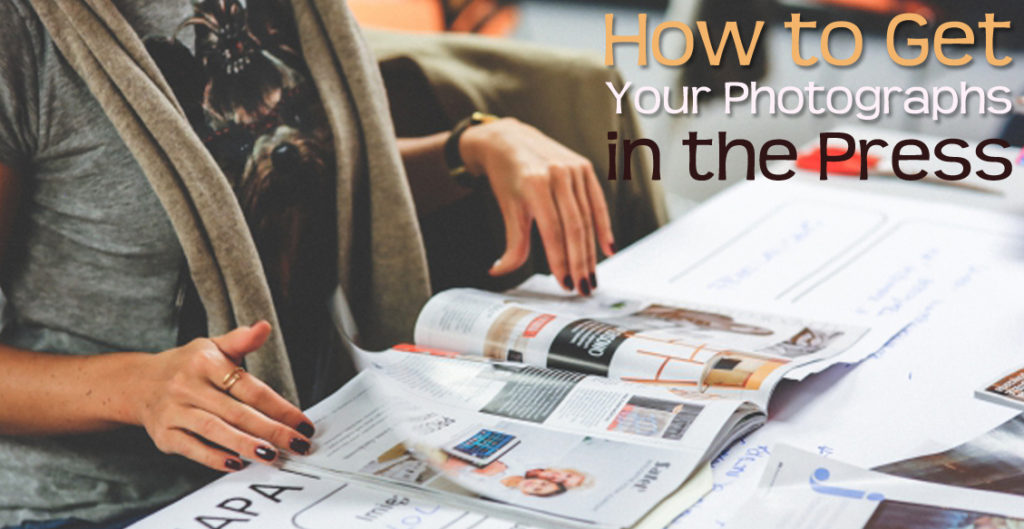You’ve spent ages honing your craft, perfecting every camera angle, ready to share your images with the world, and whilst you know world domination is perhaps a little way off, no one is standing up and taking notice of your amazing photographs.
So, what are you doing wrong? The photography world is an increasingly competitive one, and standing out from the crowd isn’t easy to do. We’ve rounded up a few top tips, to help your pictures go from camera screen to the press.
Create a Blog
You may already have a website showcasing your photography which means you’re half way there to getting your work published, but if you don’t have a blog then you aren’t really establishing yourself as an expert in your industry. You may be able to take a great photograph, but what is it that makes you as the photographer the expert?
If you’re concerned a blog will take over your life then you don’t need to worry, as you can put in as much or as little effort as you want – you do need to make sure you’re dedicated though in order to reap the benefits. Create a list of what you want to discuss on your blog, and don’t just solely relate it to photography. Think about what else relates to your subject matter and share your advice and personal experiences. Then set about making yourself the source of photography knowledge.
Be Social
Like any job, networking is key to creating, finding and taking opportunities. Fail to network, and you could end up failing your brand. Take the time to find networking events and make sure you’re prepared for all eventualities. Take business cards and your portfolio on a USB stick too, both are compact enough to slip into a pocket so you don’t need to lug a bag or portfolio around.
Get social online too. The world is dominated by digital, so make it part of your personal marketing strategy. Share your photos, engage with likeminded individuals and strike up a conversation with editors.Work on getting your name out there, editors are likely to research you once you’ve submitted your photos so make sure your profiles are active and up to date. Like any business you need to be able to show your dedication and investing in your own personal brand can help to pay off big time.
List Achievements
When you pitch to an editor don’t just waffle something along the lines of ‘please feature my work’. It’s obvious you want your pictures to be featured in the publication, you’ve sent them there for a reason – but why should they feature your images above the other photographers who also submit their work?
You need to tell the editor what makes your work special. Do you shoot images in a particular way? Do you focus on one particular area? Have you won any accolades? Received endorsement from industry experts? Let them know what makes you unique. In a sea of generic emails, full of the same pitches, making your opening statement stand out from the rest can make all the difference when it comes to which photographs they choose to use.

Presenting to Editors
Editor’s work in a stressful environment where deadlines are often tight, so making the right approach is key to getting them on your side. Keep your pitch clear, concise and include any relevant information they may ask.
You should aim to make an editor’s life as easy as possible, so include your portfolio or specific images you are offering out. Detail where the images were taken, who by and when. Include different formats of your images if you aren’t sure what platform the editor works to.
Follow up with editors, but don’t bombard them if they don’t respond to you straight away. Work on building up a good rapport and relationship with them. You want to become the first person they think of when they need imagery, not the person they avoid.
Knowing What Images to Share
Bulk sending images without editing them down to the best few, will probably result in you ending up on the scrapheap. As we’ve just mentioned, editors work in a stressful environment and they won’t have endless hours to sift through hundreds of images.
If you’re images work as a set rather than just a single image then make sure you include the set as it will help to tell the storey you captured. If you took images as a before and after piece, or through a project then mention this and explain the story behind the images you’re outreaching.
Take a look at the publication you want your work to be featured in before you set about emailing editors. What do the publication usually cover? Do they use double page spreads? Or full page photos? Or smaller images? Familiarising yourself is essential, and will help you to tailor your pitch even further.
Sharing Networks
Many editors will often look at photo sharing networks instead of going directly to a specific photographer themselves. Sharing your photos to an online gallery will mean your chances are greatly improved when it comes to seeing your photographs published by the media.
However, remember that there will be countless other photographers who are looking to achieve the same. Your photos need to be unique and offer something different to stand out, it is all well and good taking photos of flowers for example, but are they different enough to gain coverage? Probably not.
Before you upload photos take a look at whether there are any limits on how many photos you can upload, and whether you’re paid any royalties if the images is published elsewhere. Some sites offer free downloads to the user, but don’t discount these immediately as they can help to get your name out there. Getting your photos featured isn’t an easy task, but hopefully these tips have given you some insight into where to start and set you on the road to stardom.
